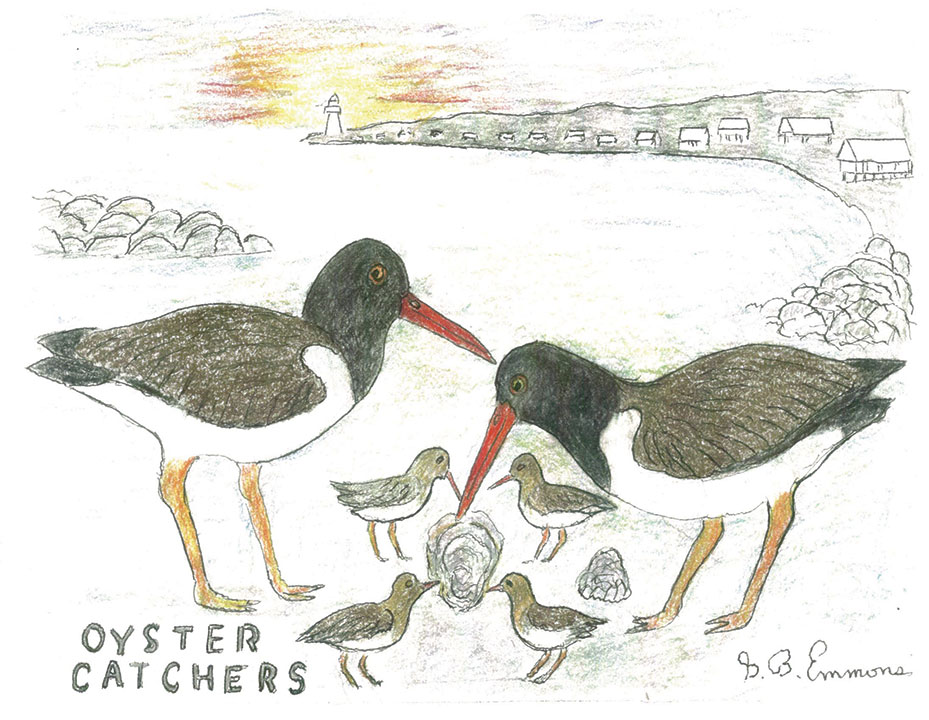The colorful, eye-catching oyster catcher is a spectacular species of shorebird about as large as a crow, but whose black plumage is brightly contrasted with a long, red bill and, like many coastal creatures, equipped with a pair of long, yellow legs for wading in shallow shoals.
By now, the oyster catcher has already migrated to Buzzards Bay, reaching all the way from as far away as North Carolina for the spring nesting season. If you have come upon them in your coastal birdwatching travels, with their short wingbeats to quickly duck out of sight, they leave behind an unforgettable, lasting surprise-birding impression.
As illustrated in my drawing, along the peninsula toward Ned’s Point Light House, the oyster catcher parents are teaching four of their youngsters how to open oysters. They have two methods of opening the shells. In one, if they find the mussel slightly open, they quickly jab their bill into the opening to cut the mussel and clean out the contents. In the other method, if that doesn’t work, they simply hammer on the shell to break it open for all to enjoy.
As in many other avian developments of anatomy through the ages of evolution, each is essential and useful in its ability to successfully survive in a coastal habitat of an intertidal zone. This diverse acumen includes mussels, clams, oysters, marine worms, sand crabs, limpets, sea urchins, and jellyfish.
Two species of oyster catchers both survive in North America. The Eastern variety migrates in large numbers along the Atlantic seaboard, but the Western is more at risk to survive in numbers facing potential hybridization with the black South American population. James Audubon recognized both species but surmised that their specialization may have evolved from only one strain coming down from Greenland or Labrador. The future success for both may well depend on their coexistence with humans in saltmarshes and sand-dune areas.
Twenty years ago, the entire population numbered about 10,000 individuals. Now, with the mitigations of factors caused by global warming and a rise in sea level, nearly 30 researched publications have come forward by the formation of the American Oyster Catcher Working Group Organization. Their mission is to alert and wake up birdwatching environmentalists to the critical development that may lie ahead, which could jeopardize and wipe out this colorful existence if we let it happen before our very eyes.
By George B. Emmons

Great article! We saw a beautiful pair in Sippican Harbor last Friday.